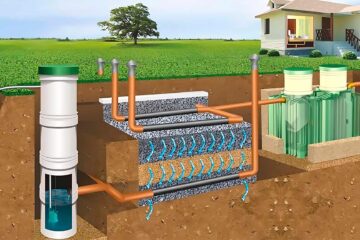Septic Tank Sizing Guide for 4-Bedroom Houses
When it comes to managing wastewater in a residential setting, understanding septic tank sizing is crucial, especially for a 4-bedroom house. A septic system is not just a luxury; it’s a necessity for homes that are not connected to a municipal sewer system. The right size septic tank ensures that your household’s wastewater is treated efficiently, preventing costly repairs and environmental hazards.
Choosing the appropriate septic tank size involves several factors, including the number of bedrooms, daily water usage, and the type of soil in your yard. For a 4-bedroom house, the general rule of thumb is that you need a tank that can handle the increased volume of wastewater generated by a larger household. Typically, the size of a septic tank is measured in gallons, and for a 4-bedroom home, a tank with a capacity of at least 1,000 to 1,500 gallons is often recommended. (more…)

